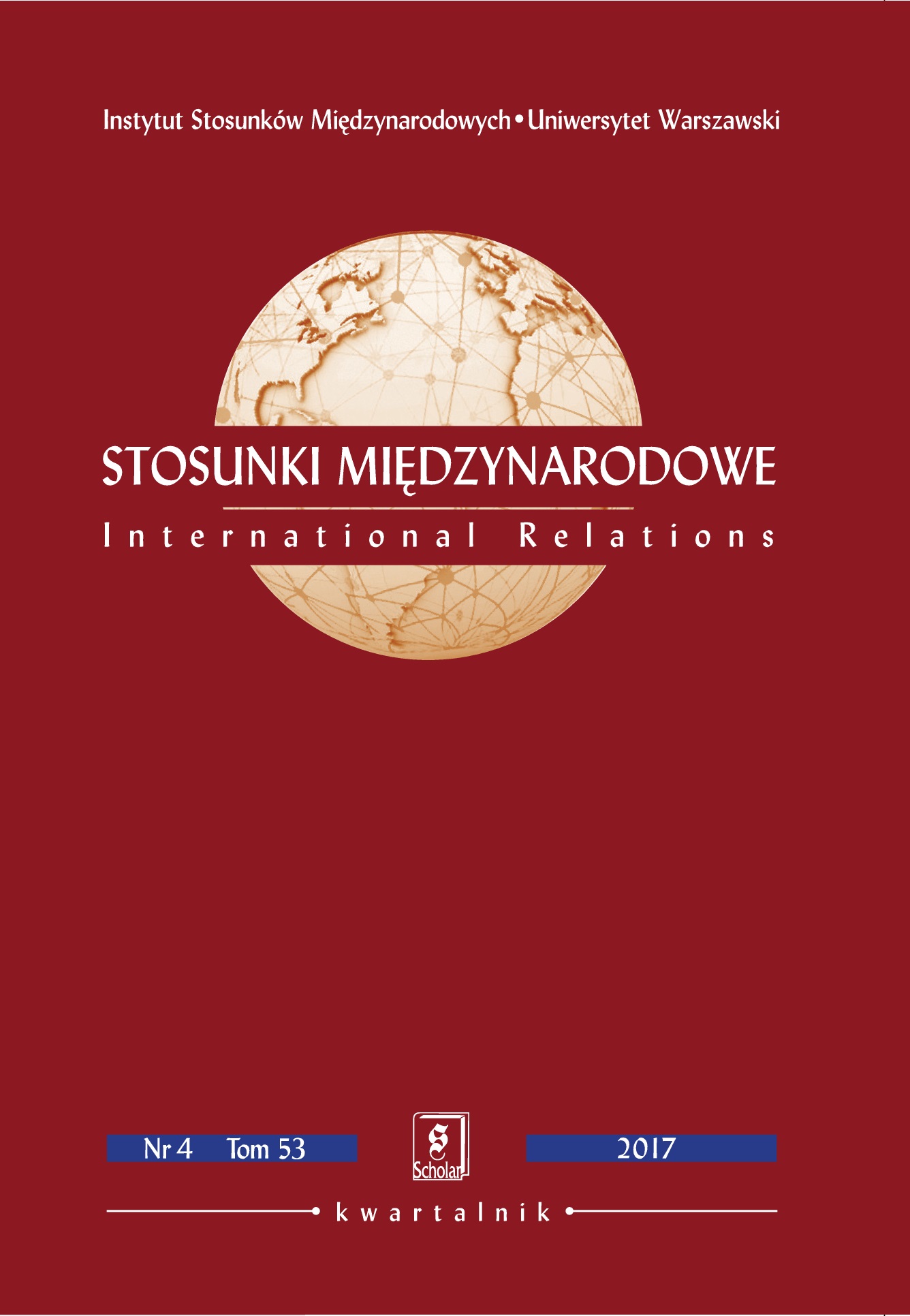Analiza wpływu i znaczenia aktorów transnarodowych poprzez model bumerangu: studium przypadku działań Amnesty International wobec kryzysu migracyjnego w Europie
Boomerang Model Analysis of the Impact and Importance of Transnational Actors: Case Study of Amnesty International’s Response to the Migration Crisis in Europe
Author(s): Justyna Nakonieczna-Bartosiewicz, Dorota HeidrichSubject(s): Politics, Economy, Governance, Sociology, Geopolitics
Published by: Wydawnictwo Naukowe Scholar Sp. z o.o.
Keywords: non-state actors; transnational actors; transnational advocacy networks; migration crisis in Europe; Amnesty International; boomerang effect
Summary/Abstract: The aim of the article is to analyse the impact and importance of transnational actors –especially non-commercial transnational advocacy networks – in international relations. In order to understand this research problem, the authors undertake an analysis of the actions of Amnesty International in the face of the migration crisis in the European Union. The activity of this non-governmental organisation and the effectiveness of its activities, individually as well as within the framework of so-called transnational advocacy networks (TAN), are analysed using the boomerang model, which constitutes a theoretical framework. The choice of such a research tool is determined by its ontological and epistemological assumptions. These highlight five levels of TANs’ impact on states and other key actors in international relations. They make it possible to assess the effectiveness of transnational advocacy networks in achieving their objectives, but at the same time to seek an answer to the question of whether and what real impact TANs may have on changes in the policies and actions of countries and other international actors. In view of the above, the following structure of the article has been adopted. The first part presents the methodological and theoretical assumptions. The case study is then analysed. The last part of the article is a summary and an attempt to answer research questions concerning whether transnational actors can have a real influence on the policies of states and international organisations and what conditions limit the impact of transnational actors.
Journal: Stosunki Międzynarodowe
- Issue Year: 53/2017
- Issue No: 4
- Page Range: 109-133
- Page Count: 25
- Language: Polish

